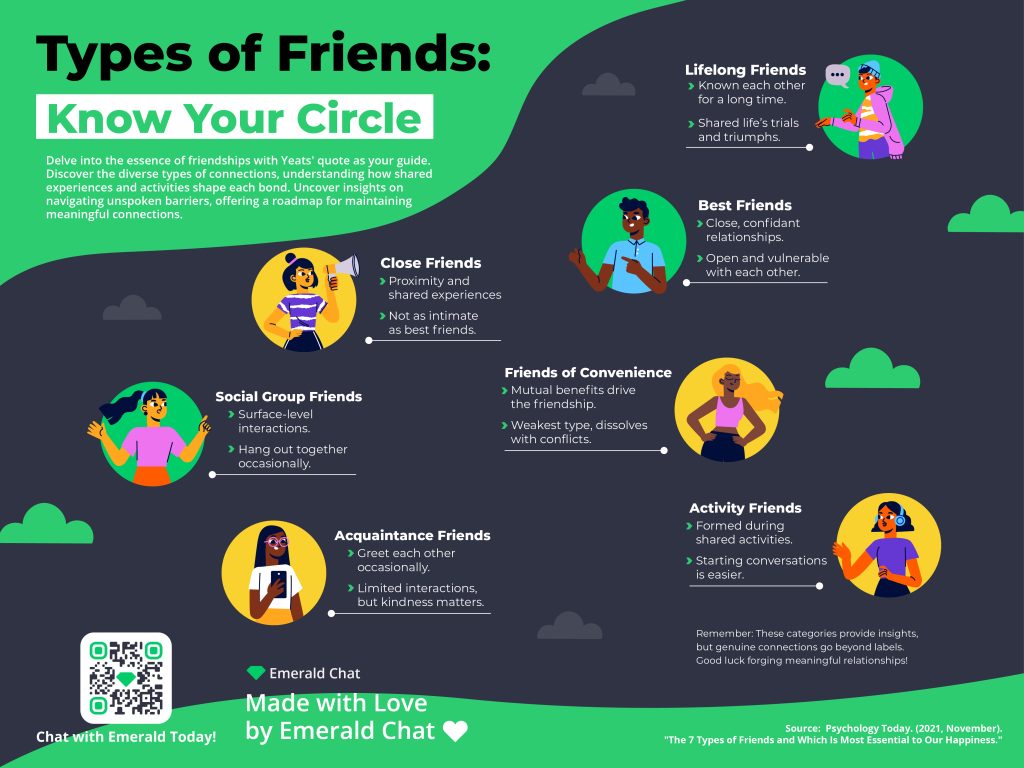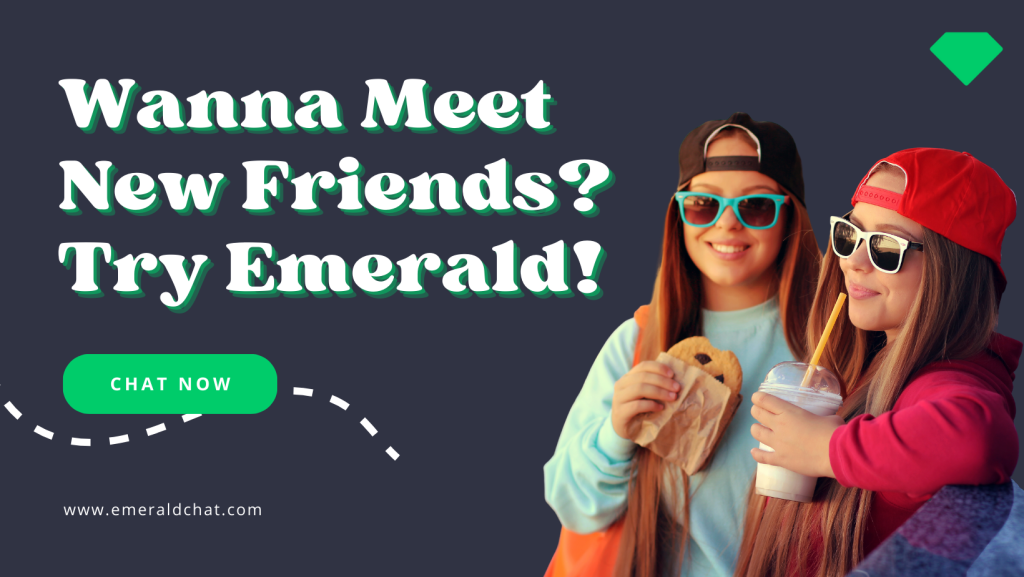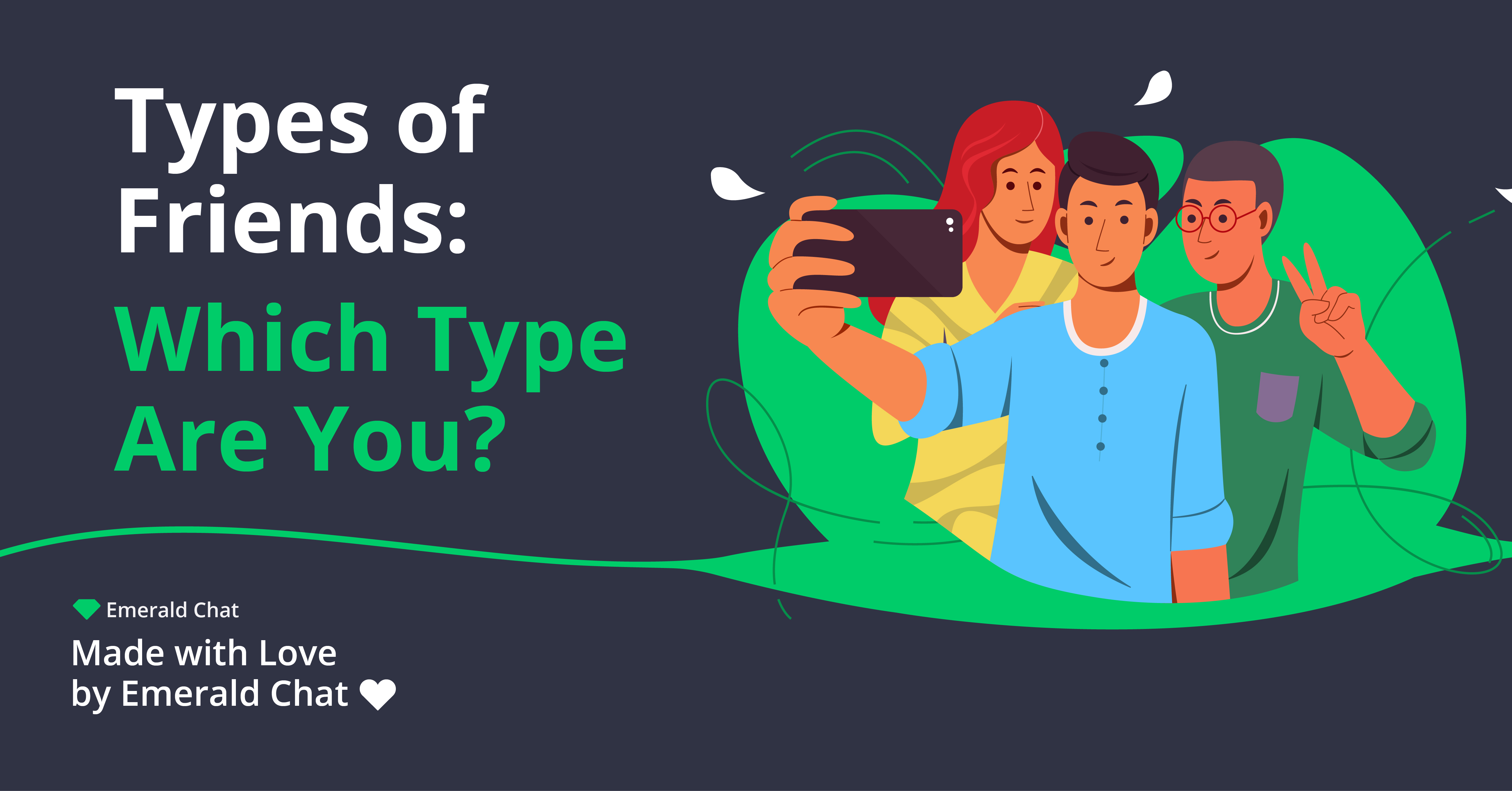“There are no strangers here; Only friends you haven’t yet met.” This quote from the famous Irish poet William Butler Yeats strikes a core truth that lies deep within humanity. To a degree, anyone can be your friend if you’ve spent time with them (also given that they don’t have other agendas).
However, what kind of friend the person you meet on a random chat platform or elsewhere depends on many factors like the time you spend together, the activities you do, how much you relate to each other, and many other minuscule or significant factors that will affect how you interact with one another.
With all these factors affecting what kind of friendship you will have with that particular person, it’s very beneficial to know the types of friendships your friendly relationship may fall into so that you know how to act in it, what unspoken barriers you both may have so that you can maintain your friendship.

As a brief overview, these are the 7 different types of friends:
- Lifelong Friends
- Best Friends
- Close Friends
- Social group friends
- Activity Friends
- Friends of convenience
- Acquaintance friends
Lifelong Friends
Let’s start with the friendship that’s easiest to define. Lifelong friends are friends that have been there ever since you can remember. This is the friend, or friends, that you’ve gone through a lot of life’s trials and triumphs with. A common misconception is that lifelong friends are automatically best friends because, many times, they are not. Being lifelong friends just means that two people or a group have known each other for a long time, often since childhood.
Best Friends
Next is the confidant, the friend who most likely has some of your DNA, the best friend. As the name implies, best friends are the best. While some may not have stuck around for as long as some of your other friends, this one is the person, or people, who you feel like you can talk with for hours on end without being tired. They are also the ones you are the most vulnerable and open to.
Best friends know a lot about each other, even things that some family members may not know. These friendships are typically formed through time. While there is a distinction between lifelong friends and best friends, the one thing they have in common is that these are the types of friends that are harder to come by (due to the busy nature of the world). Yet, they are also the ones who will most likely stick with you even if you are already beyond your prime years.
Close Friends
This is another distinction between lifelong friends and best friends. While best friends are considered as “close friends”, “close friends” in particular are people who you are just “close” with. An example can be some of your family members, as you’ve probably shared many experiences and you know a bit about each other, but ultimately, they are not your confidants. You are there for them, and they are there for you, but when it comes to the time you spend with each other and how much of yourself you share with them, there is a massive difference in comparison to your best friend and your lifelong friends. This distinction is even more pronounced when your close friends are not members of your family or live near you.

Social Group Friends
These groups are different from your squad because these groups are merely social groups you hang out with from time to time, but your interactions are surface-level only. You know each other to a certain extent, chat with each other, go to certain places or events together, but your interactions stay at just that level. Social groups are still beneficial, though, since they can accompany you on certain occasions, and you can also grow closer with someone in the group, who may become one of your closest friends.
Activity Friends
Gym buddies, Book club members, maybe even that one person you always run to when you are relaxing at a cafe. Activity friends are people that you meet when you are doing something particular. The advantage of having an activity friend is that starting conversations usually isn’t that difficult in comparison to normal starting conversations since you already have something in common to talk about. Growing closer is relatively easier if you start as activity friends.
Friends of Convenience
Friends of convenience are two people who are friends because they benefit from each other. It might be that these friends need something from each other, therefore creating a mutual understanding that they need each other to get what they need or want. This type of friendship is usually the weakest one, as it does not have the foundations to survive conflict between parties, and it simply dissipates as long as one person does not need the other any longer.
Acquaintance Friends
Have you jogged or walked your dog along the sidewalk, and someone says “Good morning!” or “Hello!” to you and you reply to them respectively? Despite having such a small interaction, these people, if you continue to greet each other, are considered friends, particularly Acquaintance friends. Not much can be said about these friendships, as the interactions are usually just greetings to each other. Despite this very short encounter, being kind to someone will always help you in some shape or form. So the next time you see your Acquaintance friend, do not hesitate to greet them in return!
In conclusion, there are seven prominent types of friends. There are more, but these are the ones that you’ll encounter the most. With the knowledge imparted through these different types of friendships, we hope that navigating through different scenarios involving one or two of these categories will be much easier for you. Lastly, it is vital that despite these different categories, it is always better to get to know someone even deeper. These categories can only shed so much light on the topic. It is up to you now to forge relationships even better than what is said in this blog post. Good luck!
REFERENCES:


Leave a Reply